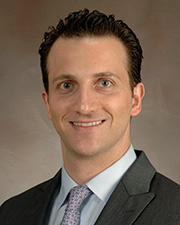Glioma connectome project wins StacheStrong grant

Yoshua Esquenazi, MD, assistant professor in the Vivian L Smith Department of Neurosurgery, has been awarded a two-year, $60,579 grant from StacheStrong to study the effects on glioma resection on the brain connectome, a comprehensive map of neural connections in the brain.
The grant awards Esquenazi for his project, “A Prospective, Longitudinal, Multi-Institutional Observational Study to Correlate Alterations of The Human Structural and Functional Connectome with Clinical Outcomes in Adults Undergoing Neurosurgical Resection of WHO II-IV Glioma.”
The project aims to determine how glioma resection impacts the brain connectome by assessing preoperative and postoperative neurological deficits, tracking neurological recovery, repair of brain pathways and networks, neuroplasticity, and neuropsychological outcomes. Esquenazi hopes that the research will contribute to the understanding of brain tumors and their development.
There is currently no cure for gliomas, the most common form of primary brain tumor, and malignant gliomas (WHO III or IV) are responsible for the deaths of nearly 17,000 patients each year in the United States. With a lack of effective therapies, most patients with malignant gliomas do not survive more than three years.
The project will create a large, prospective multicenter database to analyze changes in the MRI-based, structural and functional connectome, as they relate to key clinical outcomes: extent of resection (EOR), neurocognitive function (NCF) Karnofsky performance status (KPS), Barthel disability index (BDI), time to tumor progression (TTP), overall survival (OS), and key clinical prognostic factors such as age, gender, tumor volume, tumor location, pattern of tumor growth, and molecular phenotype.
“Due to the heterogeneity of glioma at the genomic, demographic, radiological, and connectomic level, a key strength of this prospective study is the capacity to use AI to collect a large amount of relevant, patient-specific date,” Esquenzai said in his proposal. “Additionally, this study aims to collect most of its data that is generated through routine clinical care of patients with WHO grade II-IV gliomas, with minor modifications from standard practice.
“This study aims to leverage routine imaging to minimize costs, time commitment for the patients, while still providing data to answer meaningful questions and enhance the breadth and depth of gliomas research.”